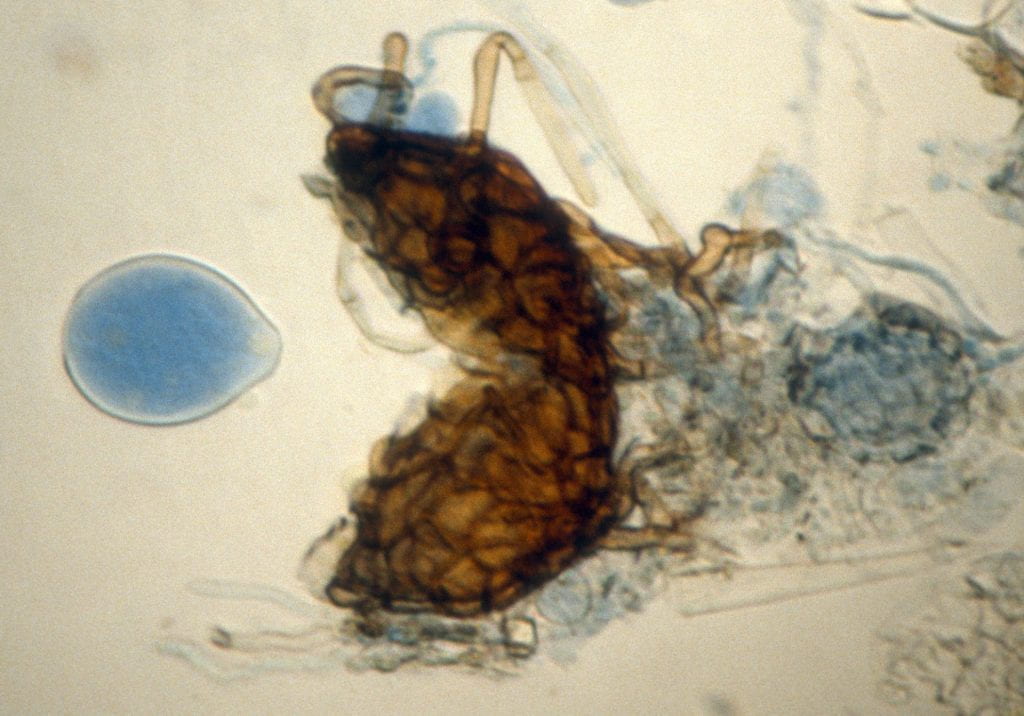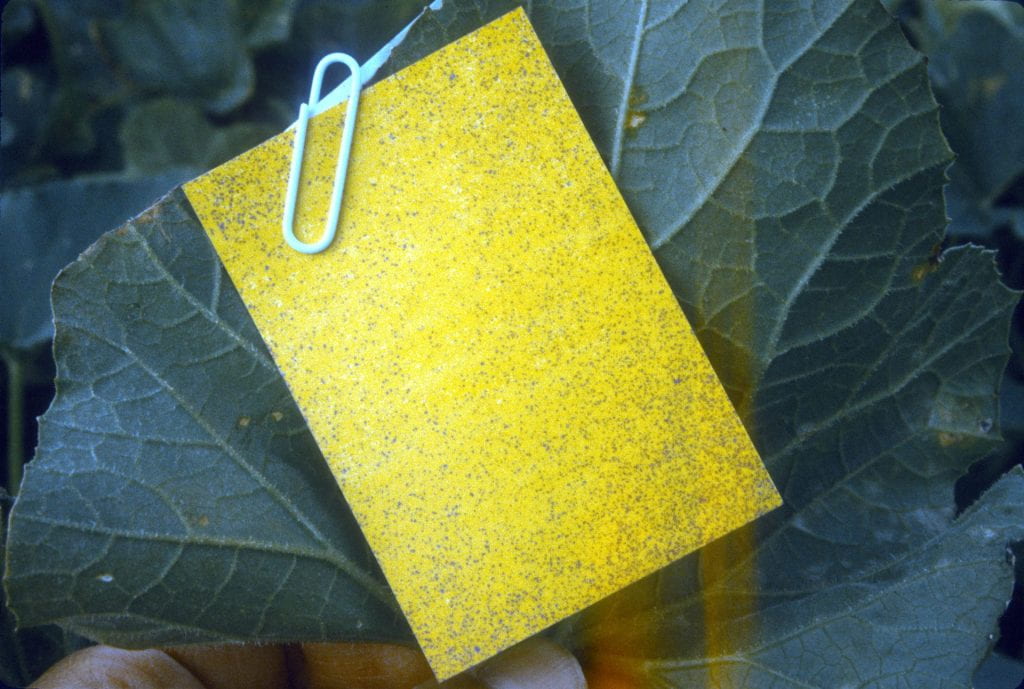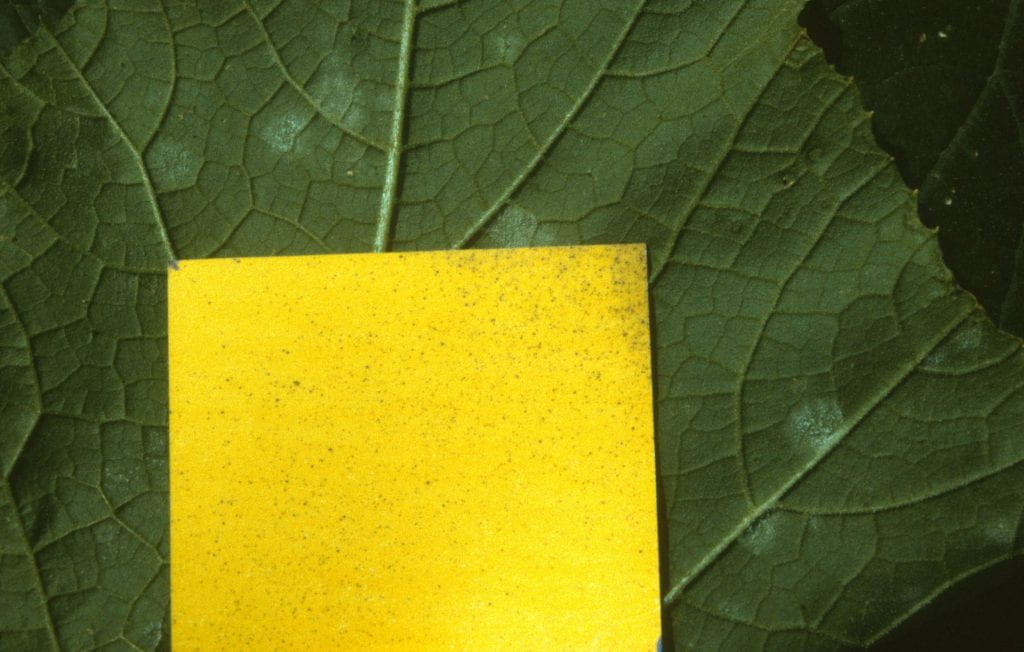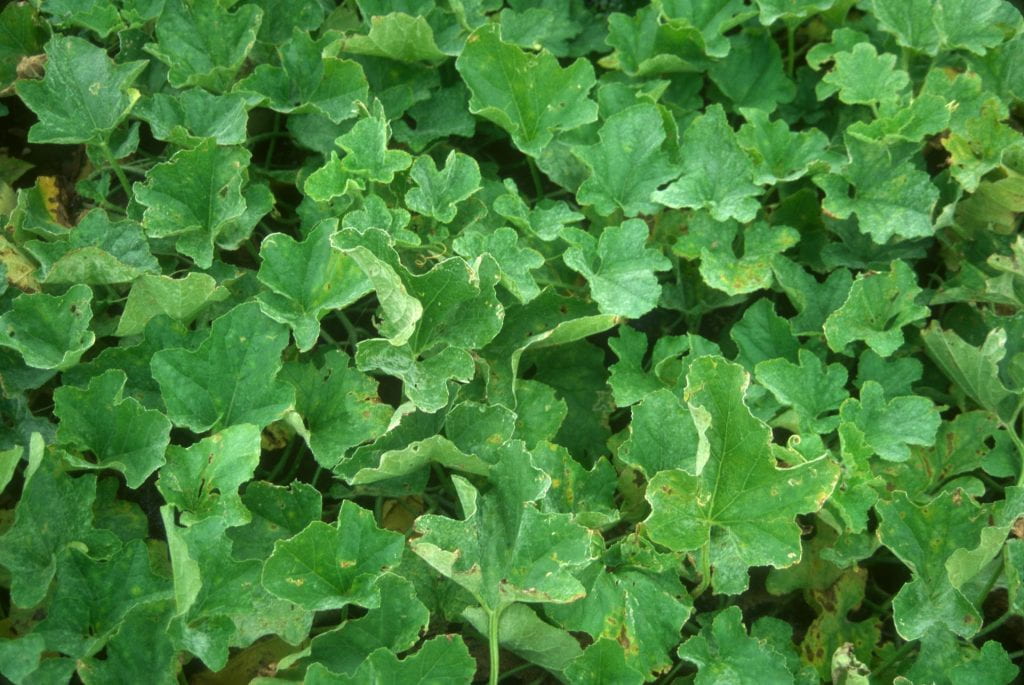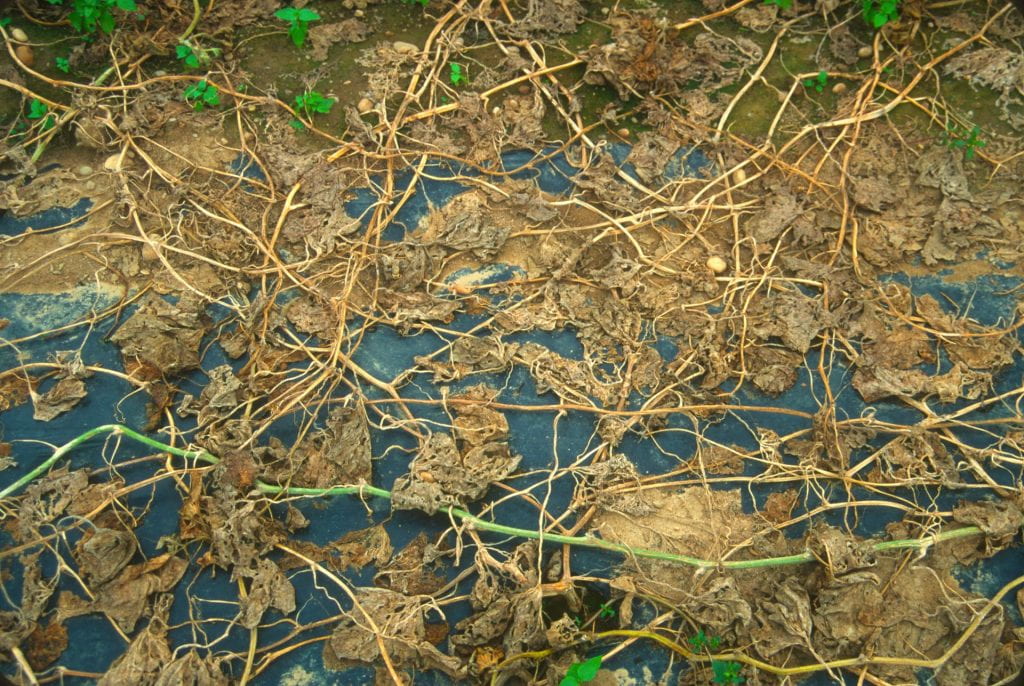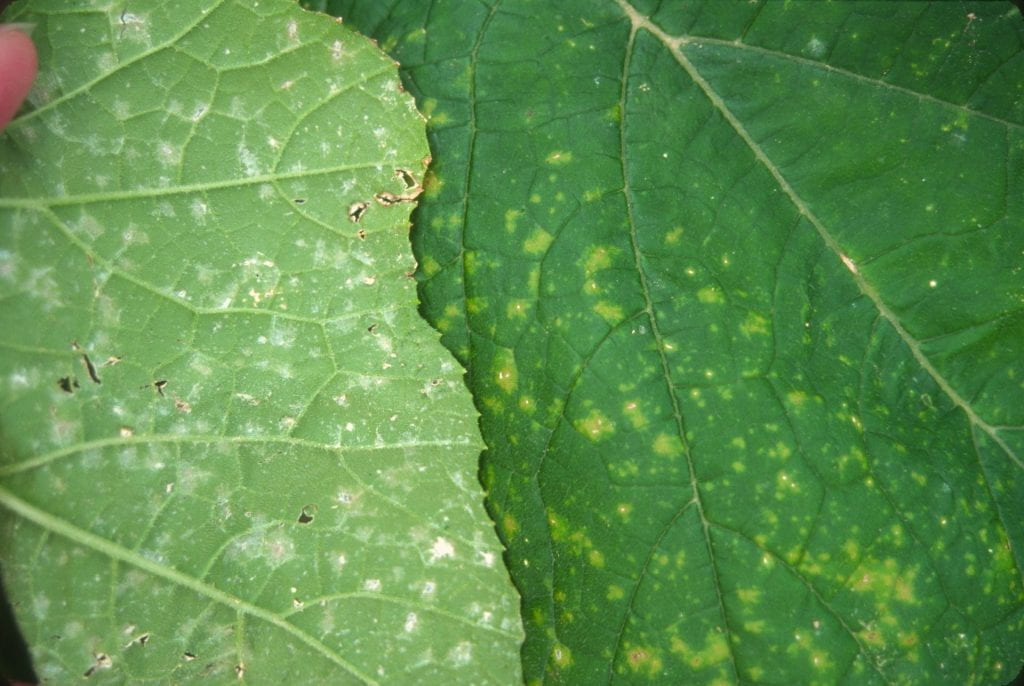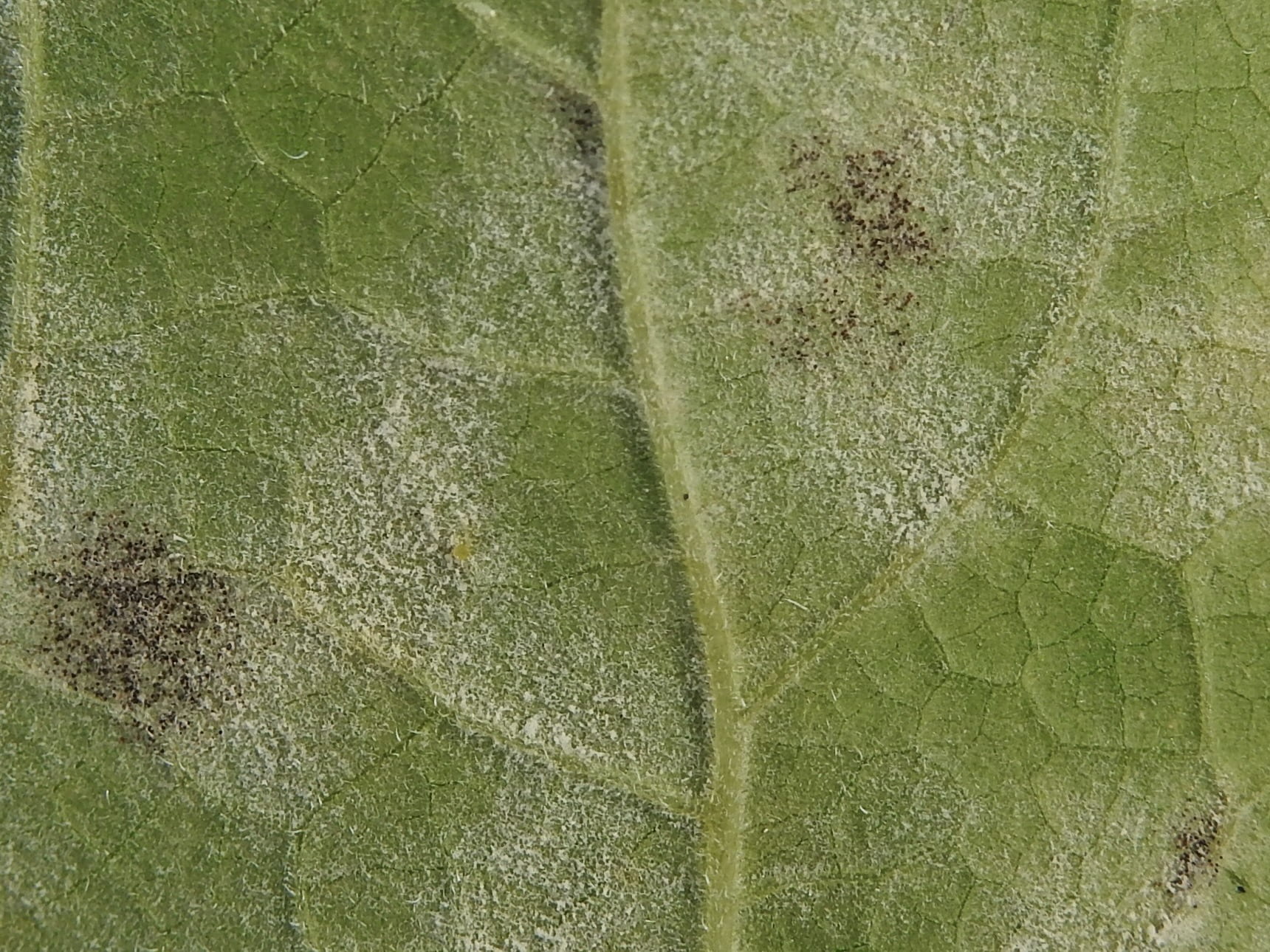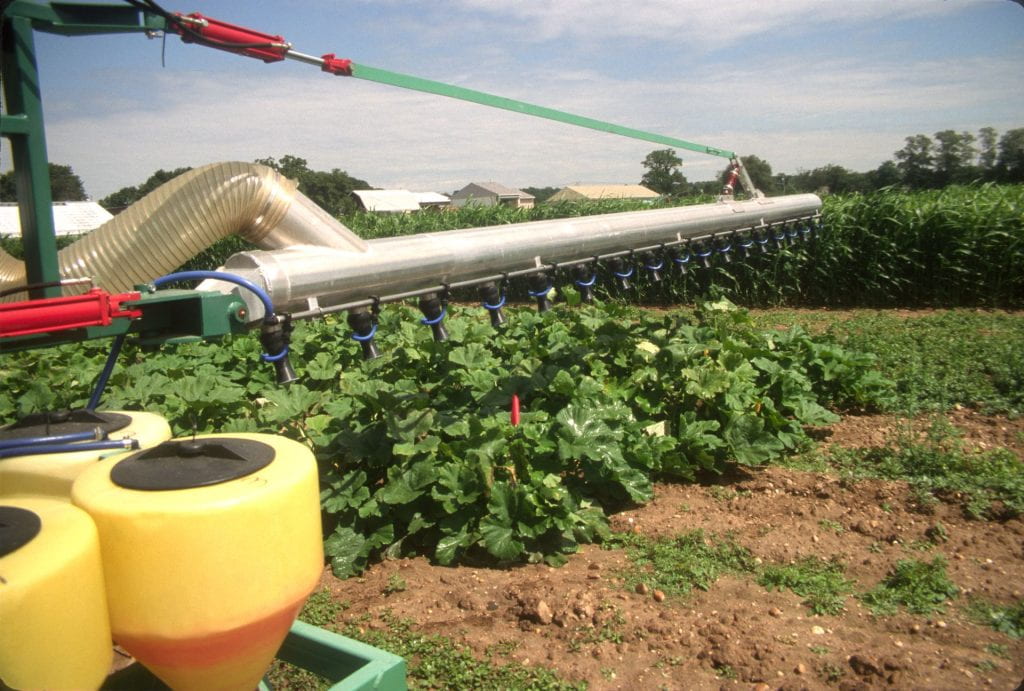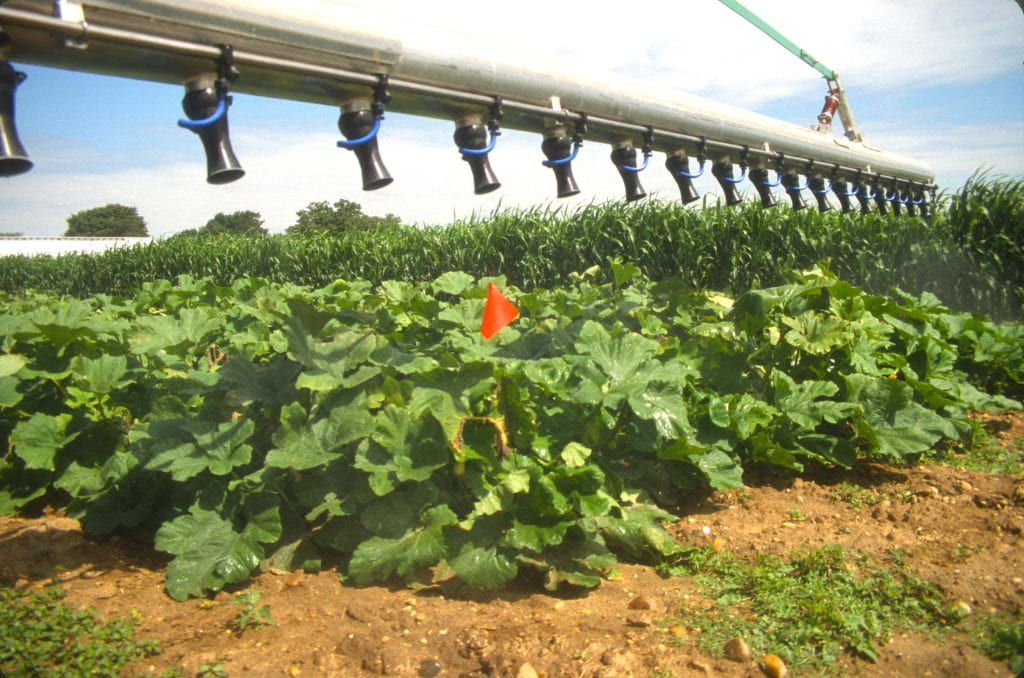Powdery mildew is the most common and widespread disease of this large, diverse crop group occurring in both field and protected-culture (greenhouse) crops. White, talcum-like, powdery fungal growth develops on both leaf surfaces and on petioles and stems. Symptoms usually develop first on older leaves, shaded lower leaves, and lower leaf surfaces. Powdery spots on lower surfaces may have yellow spots opposite on the upper leaf surface. Field-grown plants become susceptible when producing fruit or stressed. Infected leaves and then plants senesce prematurely. Rarely infection occurs on immature fruit of watermelon, gourd and cucumber.
Powdery mildew can develop quickly and under drier conditions than other fungal diseases. Time between infection and symptom appearance is usually only 3–7 days. Rapid disease development is also due to abundant spore production. High humidity is favorable for infection and conidial survival; however, infection can occur at relative humidity below 50%. Dry conditions favor colonization, sporulation, and dispersal. Optimum temperature for disease development is 68-81°F; infection can occur between 50 and 90°F. Under field conditions, powdery mildew development is arrested at 100°F and above.
Control is needed to avoid a reduction in fruit quantity and/or quality due to premature defoliation. Mildew reduces yields by decreasing the size or number of fruit or the length of time fruit are produced. Fruit quality can be reduced by sunscald and premature or incomplete ripening with resultant poor flavor (melon), storability (winter squash), and rind color plus shriveled, discolored handles (pumpkin).
All cucurbits are susceptible. However, symptoms are less common on commercial cucumbers because many varieties are highly resistant. Powdery mildew occurrence on watermelon is sporadic, likely because not all pathogen strains are able to infect this cucurbit type.
Powdery mildew is managed with resistant varieties and fungicides. This disease cannot be avoided because the pathogen develops under a wide range of conditions, notably humidity, and sporulates abundantly, thus powdery mildew occurs routinely in most production areas. Resistance has been bred into most cucurbit types. Degree of suppression varies. It is excellent in cucumber and also melon when only race 1 and/or race 2 of the pathogen are present. Resistance alone often is insufficient with squash and pumpkin. Fungicides are recommended to achieve sufficient control and minimize selection for new races. Adequate control with fungicides requires product reach underside of leaves and lower canopy. This can be achieved with mobile materials (systemic, translaminar, or volatile).
More information on management for growers.
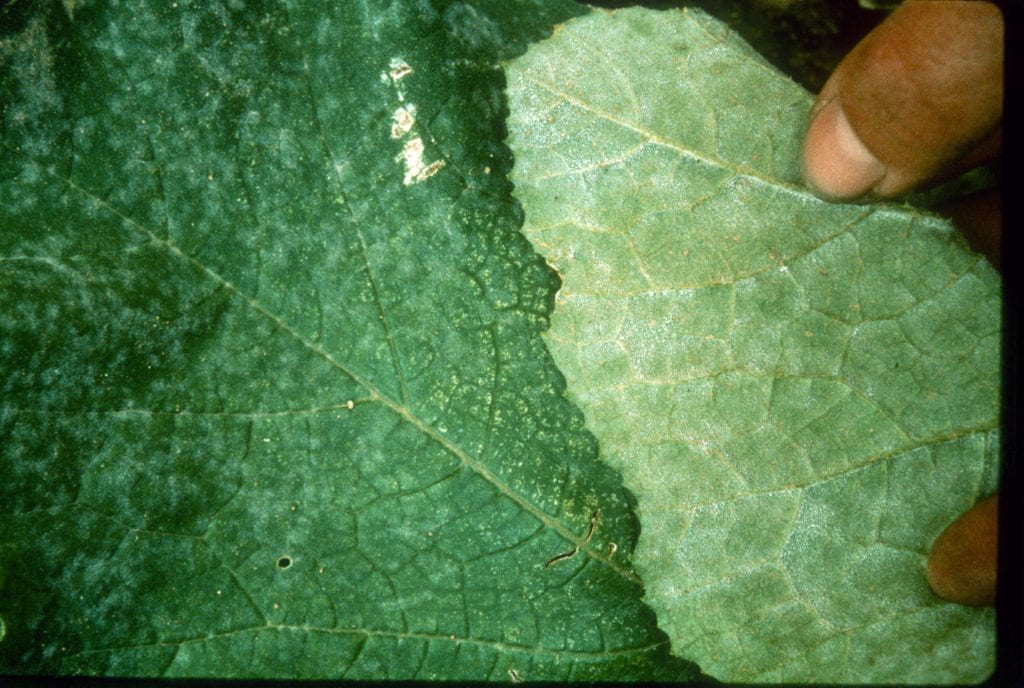
Images below: Chasmothecia, which are the tiny light to dark brown balls occurring in groups on the leaf and petiole in the following images, contain the powdery mildew pathogen’s ascospores. They are produced sexually when two pathogen isolates of opposite mating type (fungal equivalent of gender) grow together, and typically when temperatures decline during fall. These spores are protected inside these thick-walled chasmothecia enabling them to survive overwinter.
